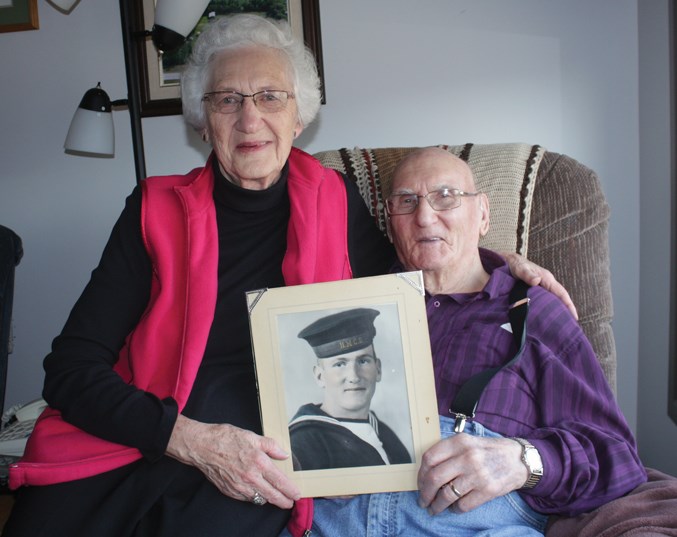At the best of times, the Atlantic Ocean is known for its rough waters, piercing gales, thick icebergs and freezing depths.
But when Douglas Glebe sailed the seas between Canada and Europe they had an even bigger hazard to reckon with: Nazis.
“I was 18 years old and they sent me a letter, so I had to go in. But I had a choice between the army, navy and air force,” said Glebe, who manned the four-inch-wide cannons aboard the H.M.C.S. Rosthern, a flower-class corvette, as an able-bodied seaman during the Second World War.
“It was quite a difference, let me tell you. When you come off the farm, you’re not used to running three miles.”
Born and raised on a farm near the Hamlet of Pickardville, Glebe said the transition from the flat prairies to the rolling sea took some getting used to, compounded by the fact he was drafted at 18 — well below the legal drinking age in 1943 — which was a problem as the prescription for sea sickness was rum.
“It was three meals up and three meals down, and they wouldn’t give me any liquor,” he said.
“But I managed to get ahold of some and that settled it right down.”
Hammocks were hung over the table, shared by three crews that worked in shifts. Tables were built with catches on the sides to prevent dishes from falling off the table during rough waters.
Corvettes were the guardians of the Atlantic for Allied supply lines, protecting shipments of troops, equipment, rations and other essentials from Axis forces as they were carried across the oceans.
Glebe noted that in addition to manning the guns in four-hour shifts, his duties also included dropping depth charges on German U-Boats and manning the look outs. Occasionally he also got to take the wheel and steer the 62-metre vessel as it patrolled the waters between Halifax and Ireland.
After the war, Glebe returned to Pickardville and resumed farming. Then, in 1952, he met his wife Eileen during a baseball game.
With a shared love of dancing, farming and baseball, the two hit it off immediately.
In July of that year, they tied the knot and never looked back. Sixty-six years later, they’re still happily married with two children.
“You have to have togetherness and make compromises,” said Eileen on the longevity of their relationship. “For example, I liked skim milk and he liked whole milk, so when we bought milk he would get two per cent and I would get skim milk. One day I said this is kind of stupid, so I’ll go up one per cent if you go down one. So that’s an easy way to compromise.”
For his efforts, Douglas was awarded the 1939-1945 Star, the Canadian War Medal and the Canadian Volunteer Service Medal and Clasp. He said while the war was a difficult time to get through, it helped shape his personal philosophy of life.
“You’ve got to enjoy your life,” he said. “You only live once, so make the most of it.”



